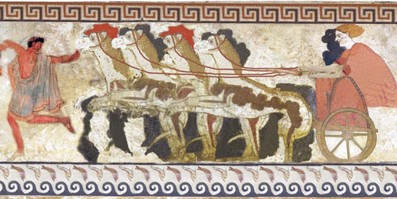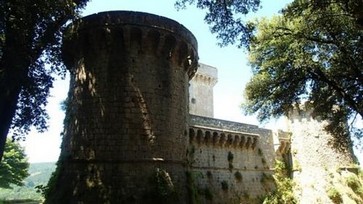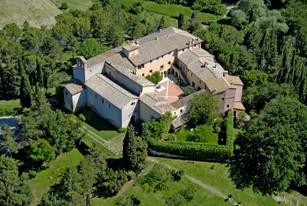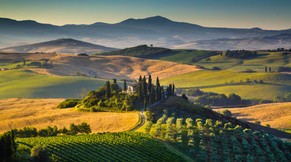Info Sarteano
Venue
Sarteano is a charming town, sheltered inland between the Val d’Orcia and the Valdichiana, in an area where one can experience breath-taking views from anywhere. The area has been inhabited since prehistoric times, which we know thanks to remarkable archaeological evidence from the Neolithic period found in the Grotta dell’Orso. The presence of the Etruscans, who lived in Sarteano from the 1st to the 9th century BCE, was very important.





In fact, in Sarteano there are some of the most esteemed Etruscan tombs in Tuscany, including the Quadriga Infernale, where there are arguably some of the best conserved frescoes from that civilization.
A large number of the discoveries found in the area over the years can be seen in the collection at the Sarteano Etruscan Museum. More info here.

As well as an ancient historical past, Sarteano also has a medieval past. The most significant part of this is the 10th-century square castle, which clearly shows the medieval spirit of the village. Among the great places to visit are the Church of San Martino in Foro and the Collegiate Church dedicated to Santi Lorenzo and Appolinare, where some valuable works are kept. Other places of interest are the Palazzo Comunale, the Palazzo Piccolomini, the Palazzo Goti-Fanelli and the Palazzo Cennini, and another little jewel is the Arrischianti Theatre.

There are corners to discover in every part of this town. A few kilometres from the centre of the village, after passing through dense forests, you reach the Spineto Abbey and the medieval village of Castiglioncello sul Trinoro, which could even be explored after having wandered through the beautiful greenery of the Pietraporciana Natural Reserve. The perfect time to visit Sarteano is August, during which every year, on the day of Ferragosto, the famed Giostra del Saracino takes place: an exciting jousting competition with medieval origins and influences.



Vino Nobile di Montepulciano - Noble Wine of Montepulciano
Close to Sarteano is the area of production of the Vino Nobile di Montepulciano. Vino Nobile di Montepulciano is one Italy’s classic red wines, and has unquestionably helped Tuscany retain its privileged place on the wine map. It comes from the vineyards that surround Montepulciano, a picturesque hill town 25 miles southeast of Siena. It is the southernmost end of the Tuscany region. The key grape variety grown here is Sangiovese (think Chianti). It’s also the same grape variety used to make another of Tuscany’s other great red wines, Brunello di Montalcino. Sangiovese grapes must make up at least 60 to 80 percent of the final wine, but the wine can also contain other local grapes as permitted in the province of Siena, including Canaiolo and Mammolo. The aging period for any Vino Nobile di Montepulciano is strictly regulated. It is a minimum of 24 months for traditional Vino Nobile, and at least 12 months must be spent in oak barrels.

Vino Nobile di Montepulciano is usually maroon-red in color and takes on a subtle brick-orange tint over time. It is characterized by its dark cherry and rich plum aromas, ripe strawberry and cherry fruit flavors, and a gently tannic ‘tea-leaf’ finish. It is also known for its medium body, firm tannins, and for the acidity which makes it a particularly age-worthy wine, some lasting decades.
